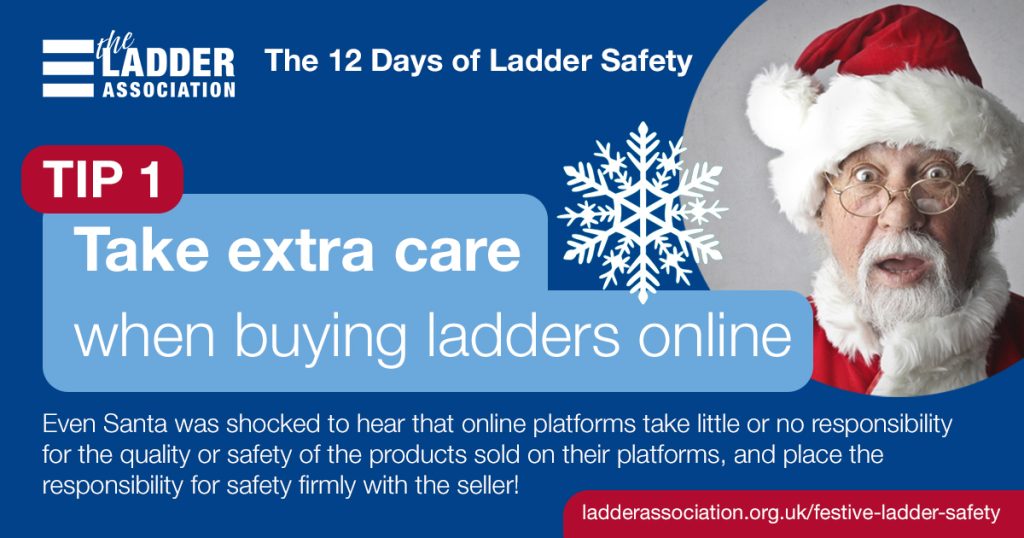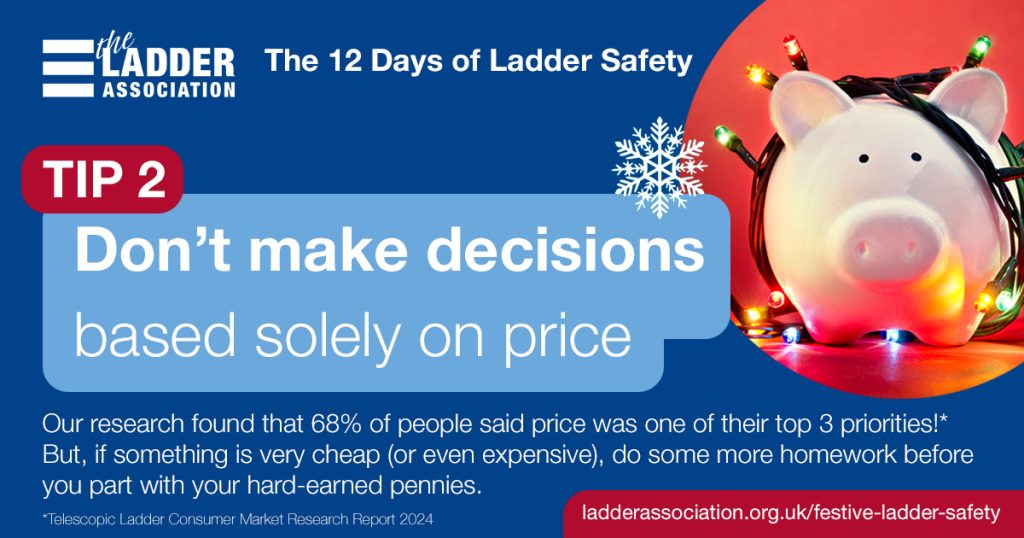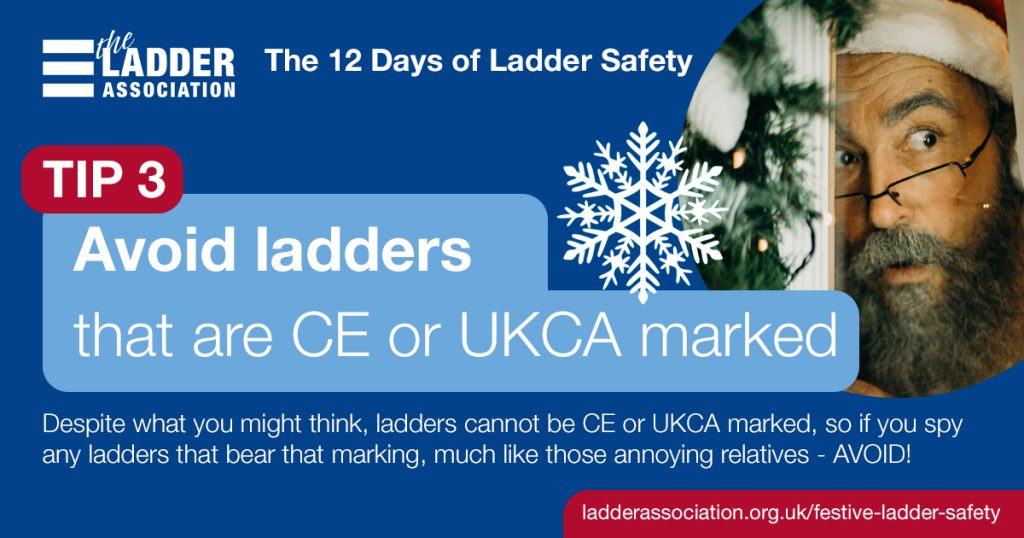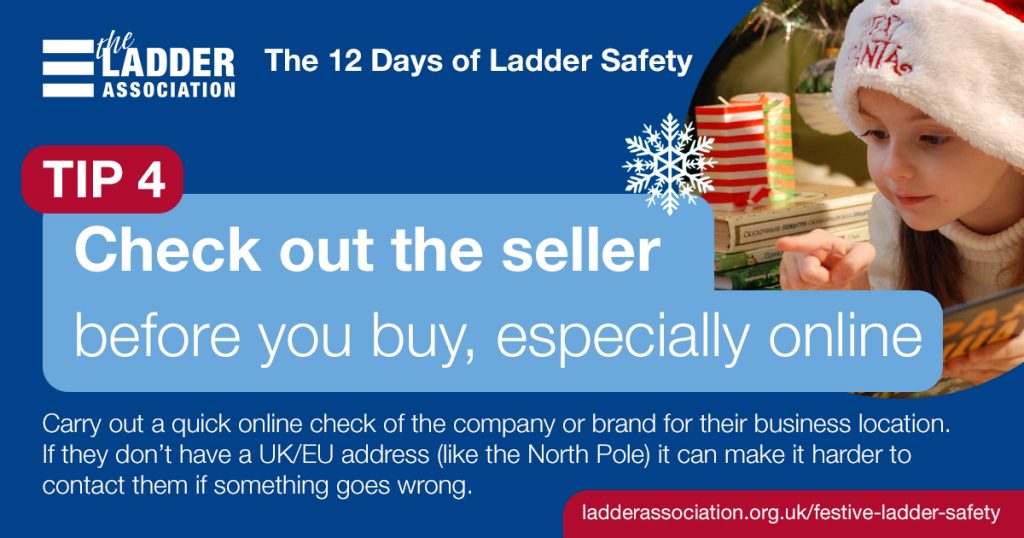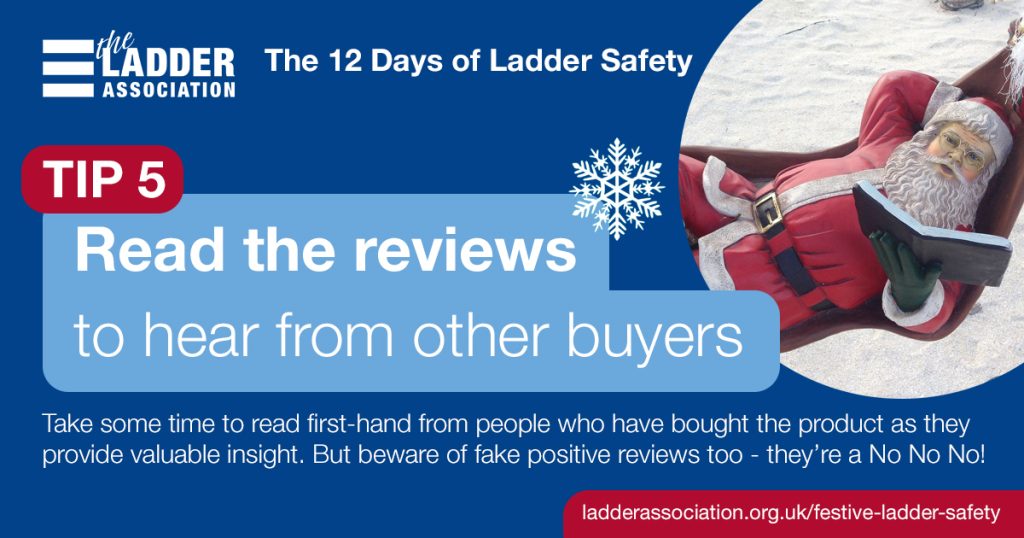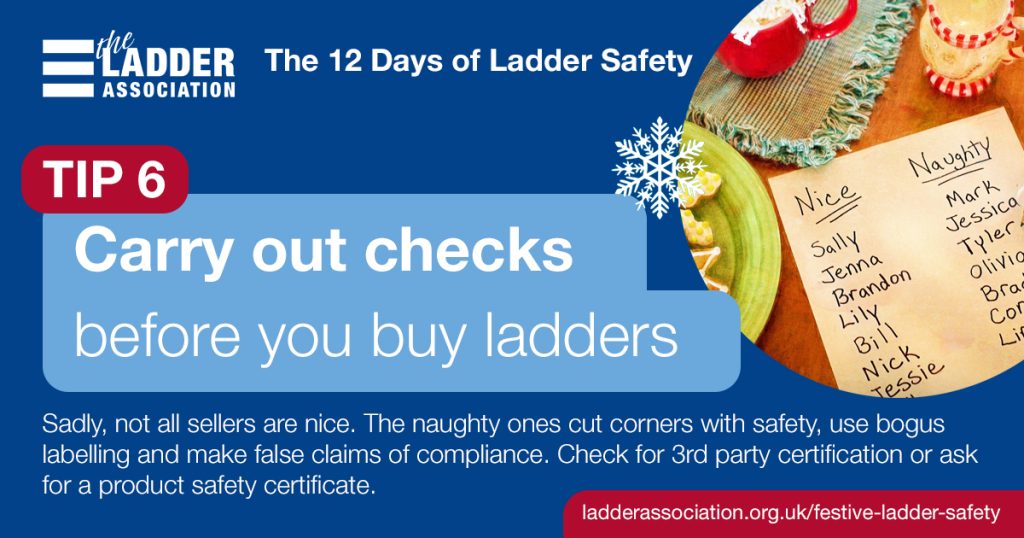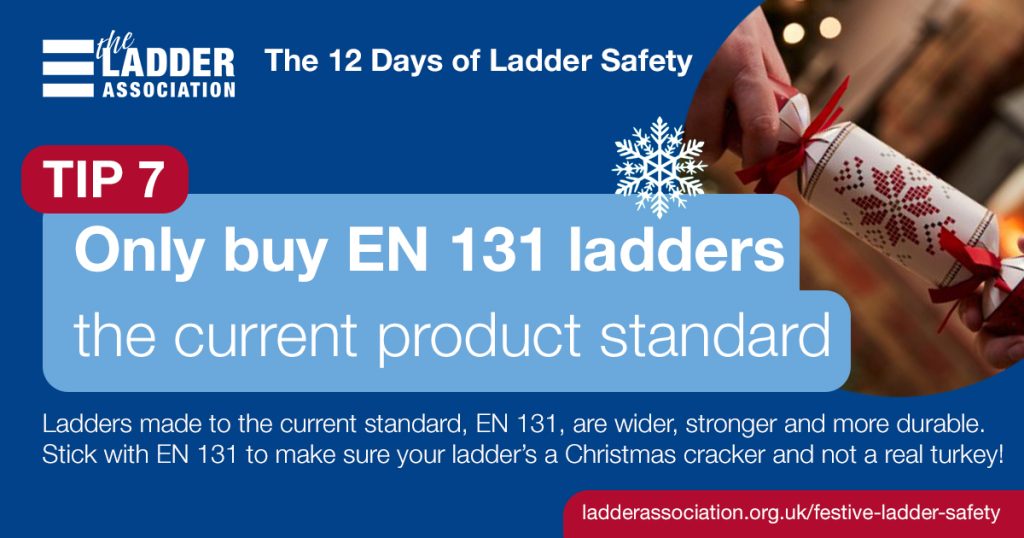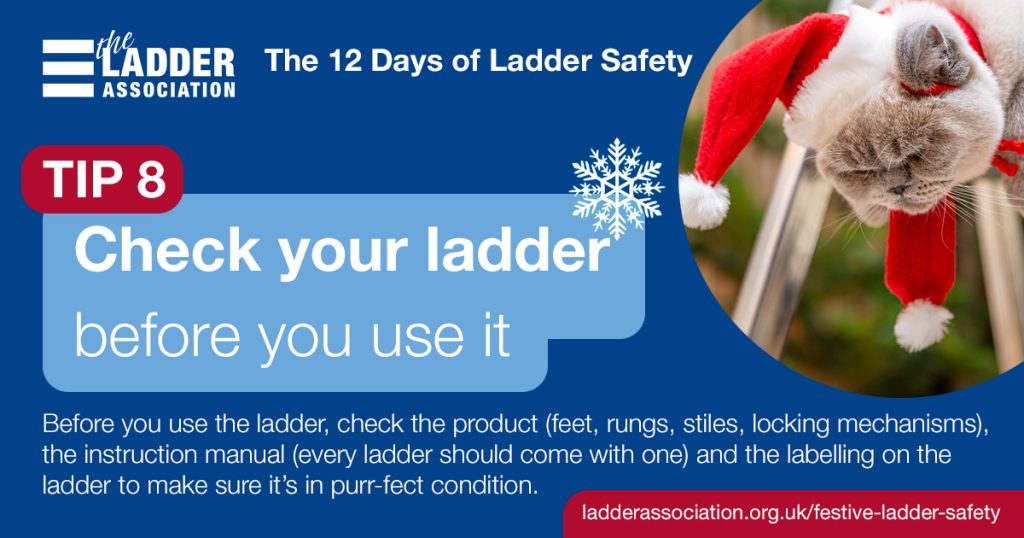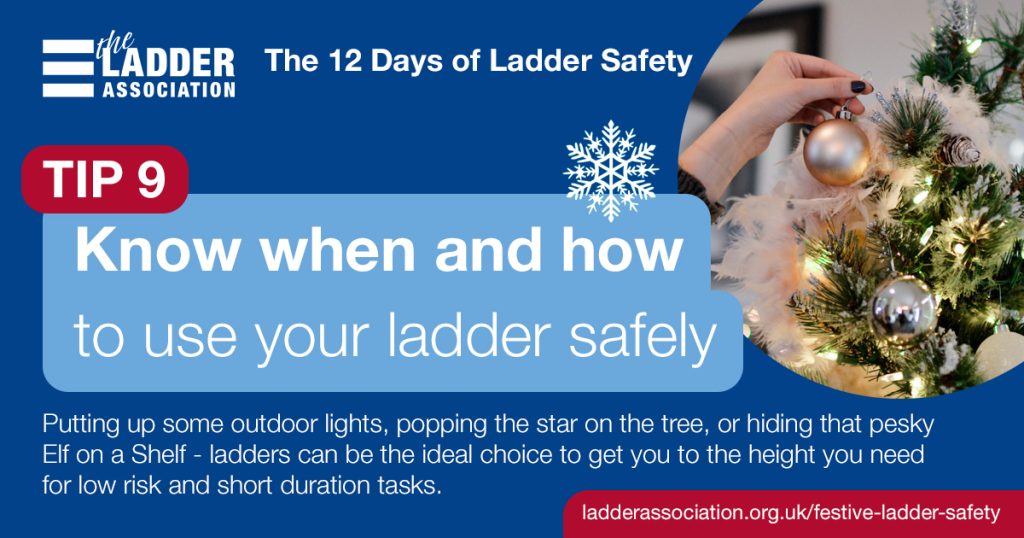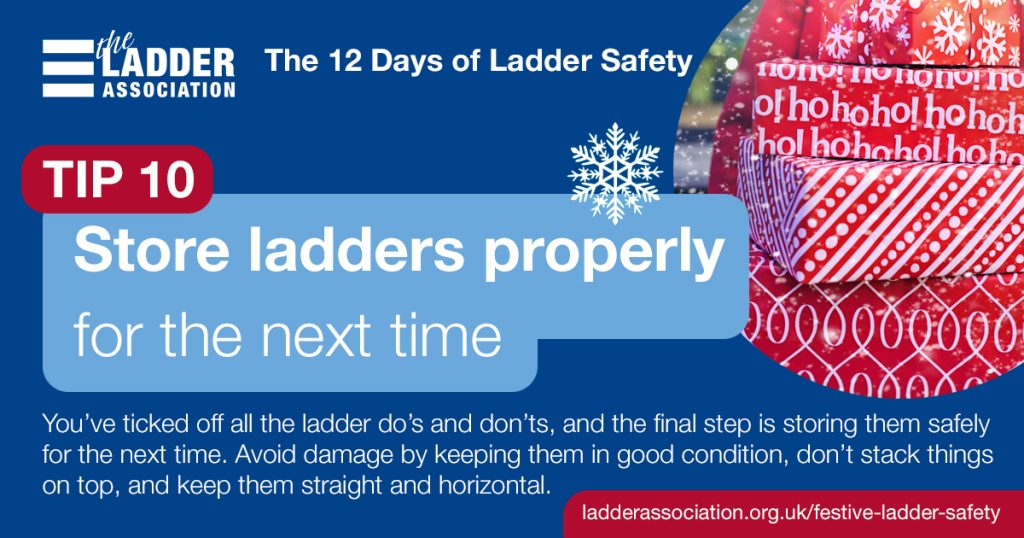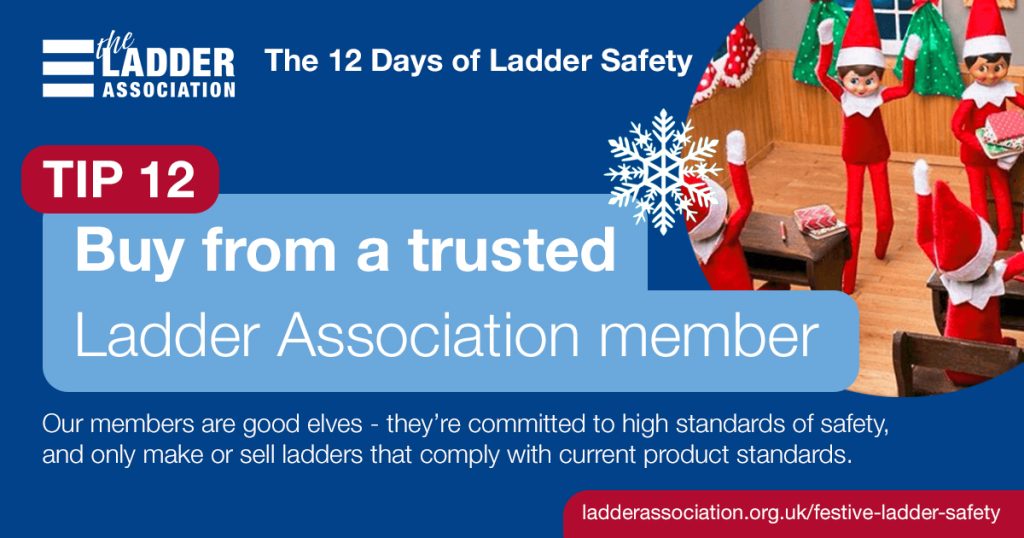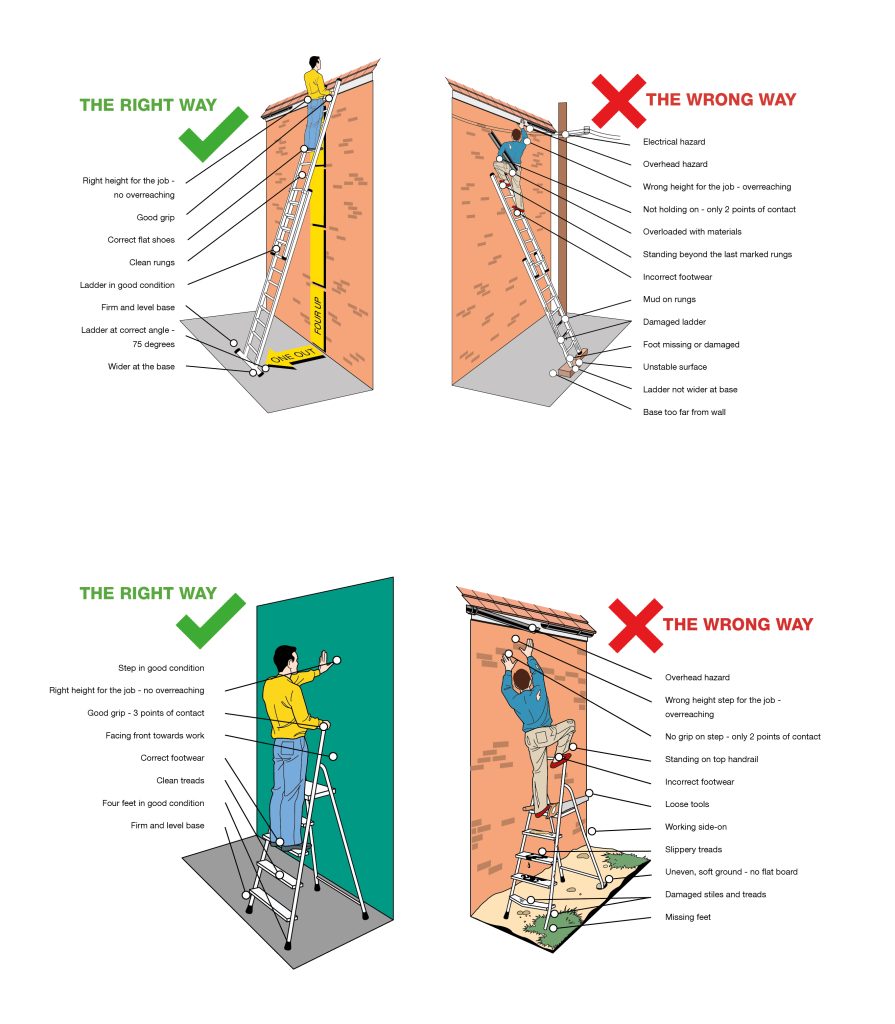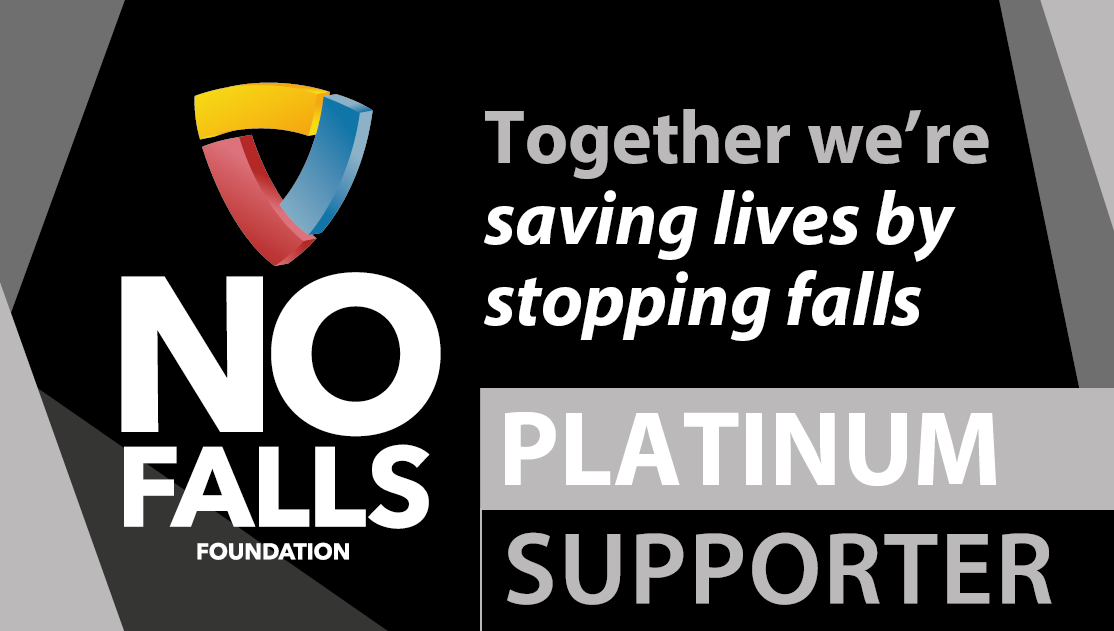Keeping you safe at height this festive season
Released as part of the Ladder Association's ongoing 'Step Up to Safe Ladders' ladder safety campaign.
Whether you're ready to buy a new ladder, or digging out your old one to put up your decorations, follow our simple steps to shop smart online and work safely at height when using ladders.

DID YOU KNOW…online platforms and marketplaces (like Amazon, eBay, B&Q Marketplace, Temu, OnBuy, Facebook Marketplace, and many more!) who sell products supplied by 3rd party sellers, take little or no responsibility for the safety of the goods being sold on their platforms?
Most people would be forgiven for thinking the products being sold on these platforms are checked in advance to make sure they are safe to use. Sadly, in many cases, no checks are being made at all before you receive the product and use it at home.
We’re campaigning for a change in the law to fix this – but in the meantime, we’ve pulled together some handy tips to help you buy safe ladders, particularly online.
You might be a regular ladder user at home (or work) and feel familiar with how to use your current ladder safely.
Or, like many people, you’re digging out your old ladders from the shed or cupboard, dusting them off and heading up to the loft to bring down your tree and decorations!
This festive season, we’re encouraging everyone – no matter their ladder experience – to take a few minutes before you climb your ladder to refresh your memory with our simple steps to keep you safe at height.
It only takes a missed footing, wrong angle or split-second overreach to put a real dampener on the festivities.
With so many types of ladders to choose from, available from a huge range of online platforms and retailers, how can you be sure the ladder you buy is safe? Here's our 'Top 12 Buying Tips' to find yourself a cracker:
1. Take extra care when buying ladders online
Did you know… online platforms take little or no responsibility for the safety of products sold on their platforms via 3rd party sellers – they put the onus onto the sellers! Don’t assume product safety and compliance checks have been carried out by them before they placed them online for sale – it’s important to do your own homework.
2. Don't make decisions based solely on price
If something is very cheap, you should question why. That’s not to say it’s poor quality, but it’s certainly a prompt to make you do a bit more homework. Genuine quality products can cost more to manufacture due to the enhanced testing and cost of materials, but equally, a higher price doesn’t necessarily mean quality.
3. Avoid ladders that are CE or UKCA marked
Despite what you might think, ladders cannot be CE or UKCA marked, so avoid any that bear that marking. It’s a red flag!
4. Check out the seller before you buy, especially online
You can carry out a quick online check of the company or brand to check their business location and visibility in the market. If they don’t have a UK/EU address then it can make it much more difficult to contact them if you have an issue after you buy.
5. Read the product reviews to hear from other buyers
These are a great way of hearing first-hand from other consumers and often give valuable insight in the product quality, mainly if it falls below standard. But beware, some companies and brands post fake positive reviews, so read them carefully, note where the reviewer is based or how many reviews they have previously posted.
6. Carry out checks before you buy your ladder
Check that the products are certified by a third-party Conformity Assessment Body. You can contact the Assessment Body (such as Test & Research Centre, TÜV, BSI to name a few) to verify the authenticity, or ask the seller for a product safety certificate to review.
7. Only buy EN 131 ladders (the current product standard)
Leaning ladders and stepladders made to the current product (EN 131) are wider, stronger and more durable. But, beware of sellers falsely claiming compliance, so consider all of our tips to give you greater peace of mind.
8. Check your ladder before you use it
Check the product (feet, rungs, stiles, locking mechanisms etc), the instruction manual (every ladder should come with one) and the labelling on the ladder itself.
9. Know when and how to use your ladder safely
As a first step, assess if it’s right to use a ladder. Ladders can be appropriate for low risk and short duration tasks that take no longer than 30 minutes. And always make sure you follow the instructions in the manual for safe and correct use.
10. Store ladders properly for the next time
Avoid damage by keeping your ladders in good condition, don’t stack items on top of them, and keep them straight and horizontal.
11. Report unsafe ladders to help keep others safe
If you think the ladder is unsafe, dangerous or not made to standard – don’t use it! You should then contact your local Trading Standards team or report the ladder on our website.
12. Buy from a trusted Ladder Association member
Our members are committed to high standards of safety, and by joining the Ladder Association, they pledge to only make or sell ladders that comply with current product standards and/or are certified by a third-party Conformity Assessment Body.
A full list of members can be found here > Ladder Association Members
Click the images to enlarge
Here are our simple steps you can take before you use your ladder this Christmas:
- Decide if it’s right to use a ladder – ladders can be appropriate for low risk and short duration tasks (no more than 30 mins).
- Select the right equipment – does it meet current product standard (EN 131)? Is it the right type of ladder for the task?
- Follow the manufacturer’s instruction manual – every ladder should come with instructions, so take some time to read before you climb.
- Check your ladder is in good condition – is it safe to use now? If it’s been in the shed for a while, check the components, give it a clean so you can see any possible damage. Make sure rungs and stiles aren’t bent or damaged, or feet missing. Check the locking mechanisms too before you take your first step.
- Position your ladder correctly – a leaning ladder should be positioned at a 75 degree angle. Make sure all feet are on the ground or steps are level.
- Make sure the ladder is long enough for the task – don’t be tempted to overreach (and please don’t try to add extra height!), if it’s a stepladder then avoid standing on the top three steps.
- ‘Get a Grip’ by maintaining a firm handhold at all times – always maintain three points of contact, this could be two feet and one
hand, or when both hands need to be free for a brief period (like knocking in a nail), two feet and the body supported by the ladder. - Don’t overload – decorations could be heavier than you think. Make sure your weight, plus anything you’re carrying doesn’t exceed the maximum total load (for EN131 it’s 150kg).
- Secure your ladder – if you need to you should tie your ladder to a suitable point, use a stability device, wedge the ladder, or last resort, get someone to foot the ladder for you.
- Wear suitable footwear! Slippers or bare feet won’t cut it, so make sure you’re wearing sturdy, flat shoes.
- Get trained to use your ladder safely! It might seem unnecessary to get ladder training, but our courses are about more than just using a ladder. They cover inspection, storage and maintenance. Add a ladder training course to your wish list this year!
More useful information
REMEMBER: If you think the ladder you just bought is unsafe, dangerous or not made to standard – don’t use it!
> Report to Trading Standards (via Citizens Advice): www.citizensadvice.org.uk/consumer/get-more-help/report-to-trading-standards/
> Report the ladder on the Ladder Association website: www.ladderassociation.org.uk/report-unsafe-ladders/





